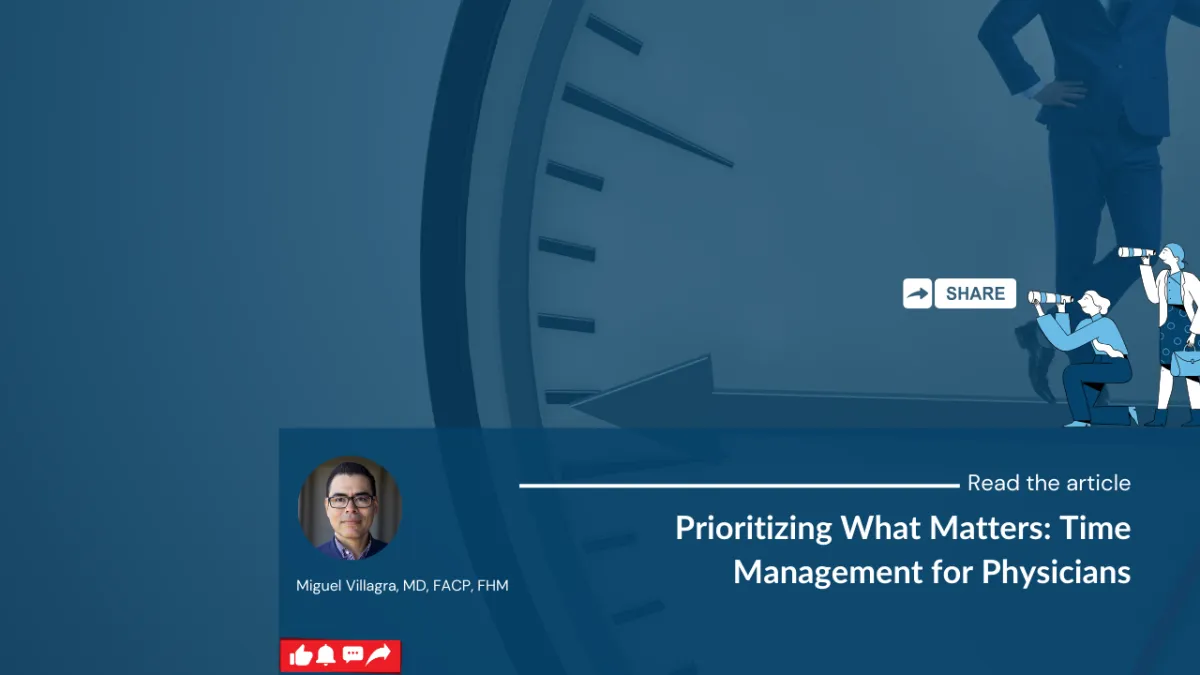
Prioritizing What Matters: Time Management for Physicians
Effective time management is crucial for healthcare professionals to maintain mental fitness, prevent burnout, and enhance productivity. With the demanding nature of the medical field, physicians must be strategic about prioritizing tasks to focus on what truly matters. This guide offers practical techniques to optimize time management and improve work-life balance.

The Importance of Prioritization

Prioritizing tasks helps reduce stress, prevents overwhelming workloads, and enhances focus on patient care. When physicians manage their time effectively, they can provide better treatment, reduce errors, and create space for personal well-being. As renowned management consultant Peter Drucker famously said, "Efficiency is doing things right; effectiveness is doing the right things."
Time Management Techniques

Eisenhower Matrix: Categorize tasks based on urgency and importance:
Urgent & Important: Handle these tasks immediately (e.g., critical patient cases, urgent reports).
Important but Not Urgent: Schedule these tasks for focused time (e.g., professional development, strategic planning).
Urgent but Not Important: Delegate or minimize these tasks when possible (e.g., administrative paperwork, non-essential emails).
Neither Urgent nor Important: Limit time spent on low-value activities (e.g., excessive social media browsing, unnecessary meetings).
Time Blocking: Allocate specific time slots for different tasks to minimize distractions. Designate periods for patient consultations, paperwork, research, and self-care. To implement effective time blocking:
Morning Planning: Spend 5-10 minutes setting up your schedule for the day.
Deep Work Sessions: Dedicate uninterrupted time blocks for patient interactions and documentation.
Buffer Zones: Leave gaps between appointments to account for unexpected delays.
Personal Time Blocks: Protect time for lunch breaks, exercise, and relaxation to prevent burnout.
The Pomodoro Technique: This method enhances focus and prevents burnout by breaking work into short intervals:
Set a timer for 25 minutes and work on a task with full concentration.
Take a 5-minute break.
Repeat this cycle four times, then take a longer 15-30 minute break.
This method is particularly useful for administrative tasks, reading research papers, or handling patient notes.
Set SMART Goals: Create goals that are Specific, Measurable, Achievable, Relevant, and Time-bound. Instead of setting vague objectives like "improve work-life balance," define a clear action plan such as "dedicate 30 minutes daily to non-work activities."
The 2-Minute Rule: If a task takes less than two minutes to complete, do it immediately. This prevents minor tasks from accumulating and consuming large portions of your day.
Leverage Technology: Utilize digital tools like scheduling apps, task management platforms, and automated reminders to streamline workflow and reduce time spent on administrative tasks.
Conclusion

By mastering time management, healthcare professionals can enhance their productivity, reduce stress, and improve their overall mental well-being. Techniques like time blocking and the Pomodoro Technique ensure focus, efficiency, and better control over daily responsibilities. Prioritizing what truly matters ensures a more effective and fulfilling medical practice while preserving work-life balance.
What time management techniques work best for you? Let us know in the comments and share your strategies for staying efficient and focused!

SUBSCRIBE TO OUR NEWSLETTER 👇
